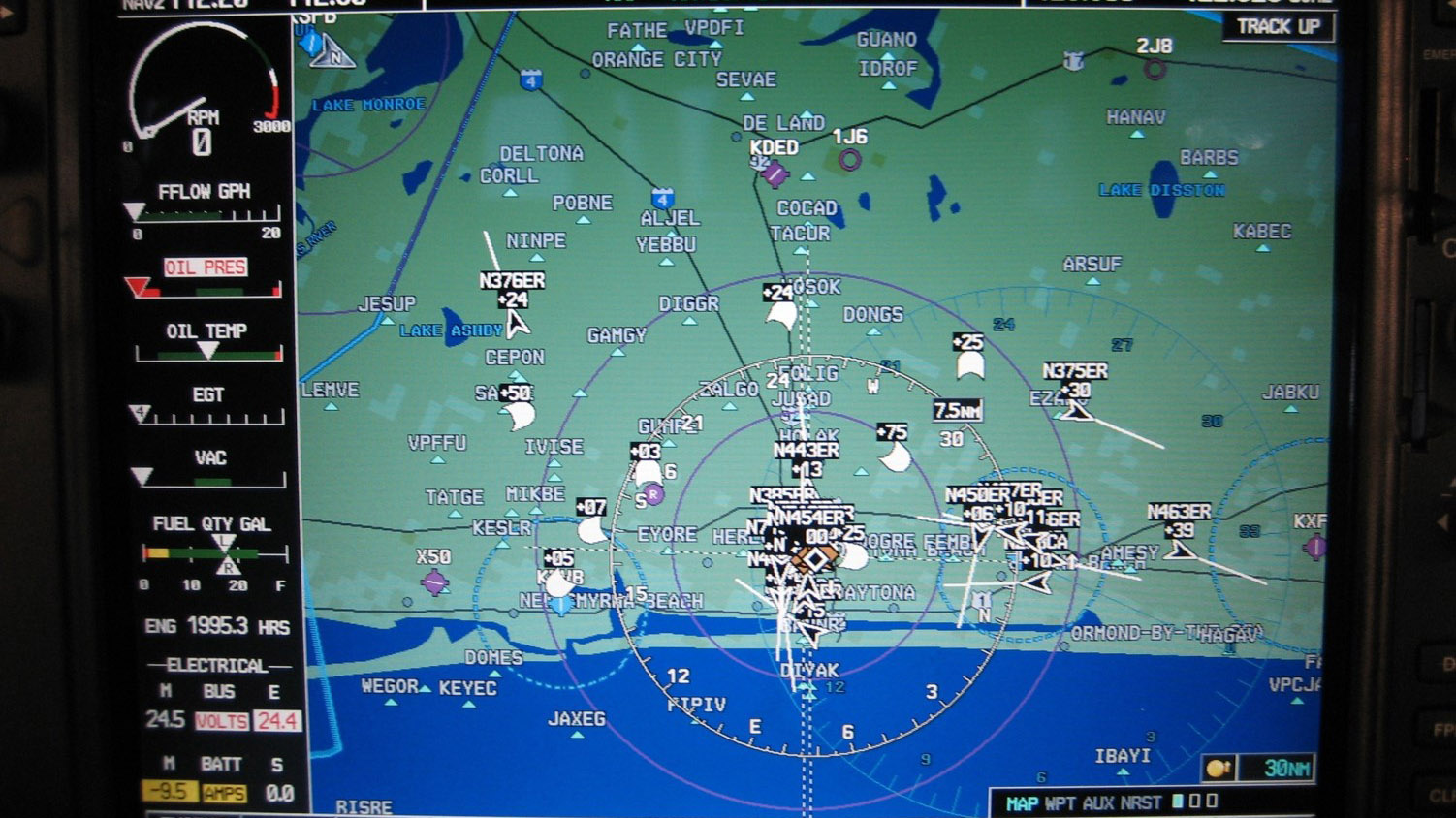Anticollision calculus
Hard lessons learned make ADS-B In required equipment at Embry-Riddle
Ken Byrnes knocks on wood every time he mentions the statistics—20 years and 1.2 million hours of collision-free flight training—but much more than luck is behind Embry-Riddle Aeronautical University’s (ERAU) conflict-free success.
"For us, the safety of our employees and our students is No. 1, and ADS-B In [Automatic Dependent Surveillance–Broadcast In] is the most valuable tool we have for that," said Byrnes, chairman of ERAU's flight training department and assistant dean of its College of Aviation. Two midair collisions, in 1995 and 1999, claimed the lives of five ERAU students and instructors.
By 2003, the university had its own ADS-B Out ground station, and its training fleet was fully equipped with ADS-B In avionics and displays—11 years before the FAA's ADS-B ground infrastructure was operational nationwide. Fast-forward to 2018: ADS-B Out and In are de facto required equipment in the 90 ERAU training aircraft at the university’s Daytona Beach, Florida, and Prescott, Arizona, campuses. At the Daytona Beach campus, the university also imports ADS-B traffic into simulators so students can "virtually fly with traffic," Byrnes said.
Traffic in the Daytona Beach area is particularly challenging for high-intensity training—the Florida campus launches approximately 300 flights per day. Training airspace is cramped by Orlando-area airports and NASA's Kennedy Space Center to the south, the Atlantic Ocean to the east, bombing ranges and military training areas to the west, and several controlled airports to the north.

Even with ADS-B Out and In, close calls still occur, but with better outcomes. "I can give you numerous examples where I believe it’s saved lives," Byrnes said of the avionics. During simulator demonstrations using the scenarios from the 1990s fatal midair collisions, pilots with ADS-B situational awareness modify their courses in ample time to avoid a conflict, he said. "Twenty years ago, they didn’t have that luxury," Byrnes said.
There are other benefits to having ADS-B Out as well. ERAU uses ADS-B to monitor all aircraft in its fleet, especially those flown by students on long cross-country flights. "The route is shown and flight supervisors monitor it," Byrnes said. "If we have an emergency and we get a call from that aircraft, we know exactly where it is and where it’s headed." The tracking information can also be used to confirm or combat noise complaints. If someone calls to say he or she saw an ERAU aircraft over their home at a low altitude, recorded ADS-B data will show the actual altitude.
The university is experimenting with an ADS-B-based spinoff Byrnes called "geometric fencing." By creating a virtual fence over a sensitive area—for example, a no-fly zone below 1,000 feet and within a 1-mile radius of an exotic bird farm west of Daytona Beach International Airport—flight supervisors know immediately if students are beyond their limits. "If someone penetrates that fence, the system could send an email instantly," Byrnes said. "'Aircraft 453 just entered the bird farm.' It could send another email when they exit it." Geometric fencing can also be created for offshore operations, which will alert flight supervisors when an aircraft is beyond gliding distance to the shore. "Rather than waiting for someone to identify that there's an issue and then going to look, this will be much more proactive," he said.
Byrnes said students get the same training for ADS-B Out or In that they would for any other avionics on the aircraft. "To them, it’s just another piece of the airplane," he said. "Usually when they leave here and go to the airlines, especially years ago, they ask, 'OK, so where’s my ADS‑B?'"
John Croft is a writer/editor for FAA NextGen Outreach and Reporting.



